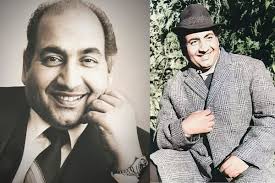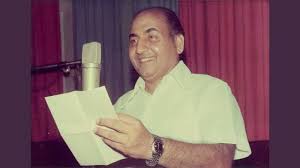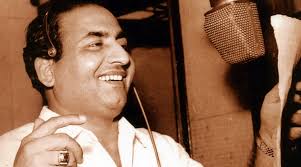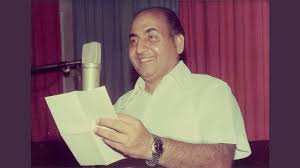Table of Contents
The Life and Legacy of Mohammed Rafi
Mohammed Rafi, an iconic figure in the world of music, was born on December 24, 1924, in the vibrant town of Kotla Sultan Singh in Punjab, British India. Coming from a modest family, Rafi was the youngest of his siblings, and his family’s financial struggles profoundly impacted his early life. As a child, he showed an inclination towards music that quickly became evident to those around him. The atmosphere of his home, filled with traditional Indian music, provided a nurturing ground for his artistic sensibilities.
In 1940, amid the tumult surrounding the Partition of India, Rafi’s family migrated to Lahore, where he experienced both cultural enrichment and challenges. It was during this time that Rafi’s talent began to flourish. His first public performance occurred at a local gathering, where he overwhelmed the audience with his enchanting voice. This pivotal moment marked the beginning of his journey towards stardom. Under the tutelage of various music mentors, Rafi honed his skills and developed his signature vocal style, characterized by its passionate expression and versatility.

The influences on Rafi’s musical journey were diverse. He was inspired by legends such as K. L. Saigal and inspired by the folk traditions of Punjab. These elements would later meld with the various musical styles he encountered as he ventured into playback singing for films. His relentless dedication, coupled with his ability to adapt to different genres—ranging from classical ghazals to upbeat numbers—reflects the fervor that propelled his illustrious career. Rafi’s legacy is underscored by his contribution to Indian cinema and music, encapsulating an essence that evokes nostalgia and admiration. This rich background not only shaped his identity but also established him as a transformative figure in the musical landscape of India.
Lesser-Known Facts About Rafi
Mohammed Rafi, regarded as one of the greatest playback singers in the history of Indian cinema, has a fascinating life story that extends beyond his exceptional vocal talent. One of the lesser-known aspects of Rafi’s life is his humble beginnings. Born on December 24, 1924, in a small village in Punjab, Rafi grew up in a modest family that appreciated music. His father’s inclination towards music greatly influenced Rafi’s early exposure to the art form, shaping his journey in the years to come.
Rafi’s struggle in the music industry is another compelling facet of his story. Early in his career, he faced significant challenges, particularly due to his initial focus on Hindustani classical music. It wasn’t until he shifted his style and embraced popular music that he began to gain recognition. His extraordinary talent eventually caught the eye of prominent composers, leading to the remarkable rise of Mohammed Rafi as a household name within the Indian film industry.
Moreover, Rafi was not only a versatile singer but also a deeply emotive artist. He possessed an ability to convey a wide range of emotions through his songs, appealing to diverse audiences. His style often incorporated elements from various genres, reflecting an exceptional adaptability that set him apart from his contemporaries. This uniqueness played a significant role in his evolution as a musical icon.
Another intriguing aspect of Rafi’s life was his dedication to his family. Despite his fame, he remained grounded and devoted to his loved ones. He balanced his professional commitments with personal life, often citing his family as a source of inspiration and support throughout his illustrious career.
These lesser-known facts about Mohammed Rafi show that his legacy transcends merely his musical contributions. They underscore the complexity of his character and the personal experiences that shaped him into a cultural icon of his time.

Rafi’s Timeless Music: A Look at His Top Songs
Mohammed Rafi, an indelible figure in the Indian music landscape, left behind a legacy marked by a rich and diverse discography. His exceptional talent enabled him to traverse various musical genres, appealing to a wide range of listeners. Among his top songs, romantic melodies that portray love and longing stand out, capturing the ethos of relationships during the golden era of Bollywood. A prime example is “Chura Liya Hai Tumne Jo Dil Ko,” a song from the movie “Yaadon Ki Baaraat,” which continues to evoke feelings of nostalgia and affection through its heartfelt lyrics and Rafi’s emotive voice.
Moreover, Rafi’s versatility shone brightly in patriotic songs that stirred a sense of national pride. “Ae Mere Watan Ke Logon,” sung at a time when India needed unifying voices, remains an extraordinary piece of music that galvanizes listeners even today. This song highlighted Rafi’s ability to invoke deep emotions, making it an unforgettable ode to the sacrifices made for the nation. The song’s relevance transcends generations, capturing the spirit of resilience and patriotism.
Additionally, Rafi’s devotional songs enhanced his repertoire, showcasing his spiritual essence. Tracks like “Tumhare Mukhde Pe” illustrate not only his technical mastery but also his profound connection to the divine. These songs, often played in temples and religious gatherings, are beloved for their mellifluousness and soul-stirring impact, cementing his place in the hearts of devotees.
As we reflect on Mohammed Rafi’s contributions, it becomes evident that his music resonates beyond mere entertainment. His songs encapsulate myriad emotions, experiences, and cultural narratives, ensuring his legacy remains timeless. Each track serves as a testament to his brilliance, ensuring that his artistry will be cherished for generations to come.

Rafi’s Enduring Influence on Contemporary Music
Mohammed Rafi, a musical titan whose voice continues to resonate across generations, has had a profound impact on contemporary music. His unique vocal techniques and emotive singing style serve as lasting inspirations for modern musicians and artists who seek to capture the depth and versatility that Rafi embodied. As a versatile singer, his mastery over various genres, including ghazals, bhajans, and film music, demonstrates the broad musical spectrum from which contemporary artists draw inspiration.
Many modern singers cite Rafi as a significant influence in shaping their artistic identities. For example, current playback singers often pay homage to Rafi by incorporating his vocal techniques into their styles. His ability to convey emotion through melody makes his work a valuable instructional tool for aspiring artists. When looking at remixes and covers, it becomes evident that Rafi’s music is continually revisited and reimagined, ensuring that his rich legacy is passed down to newer audiences. Countless tributes and adaptations in various media underscore the cultural significance of his work and the lasting power of his melodies.
Rafi’s music not only remains relevant but also thrives in contemporary culture. Social media platforms have created avenues for both established and emerging artists to reinterpret Rafi’s classics, thereby introducing his artistry to younger generations. Moreover, the resurgence of interest in retro music has led to renewed appreciation for Rafi’s catalog, with music festivals and tribute concerts frequently featuring his timeless hits. This ongoing celebration of his work solidifies Mohammed Rafi’s status as an enduring figure in the landscape of Indian music. His legacy serves as a testament to the universal appeal of his artistry, and it is evident that he will continue to inspire musicians for years to come.


1 thought on “Celebrating Mohammed Rafi: 100 Years of a Musical Legend”